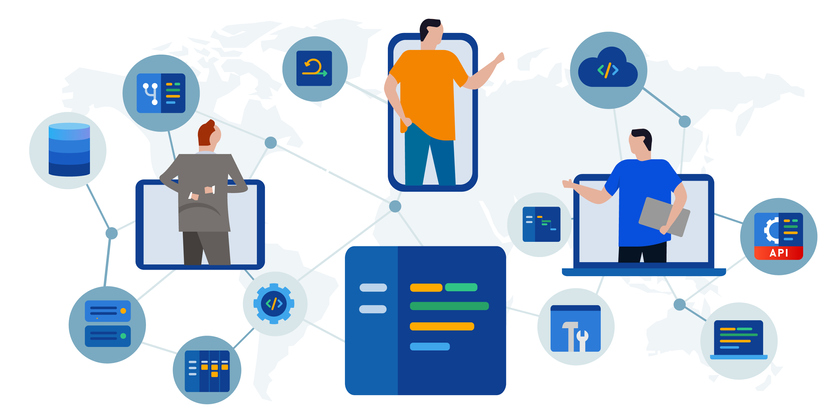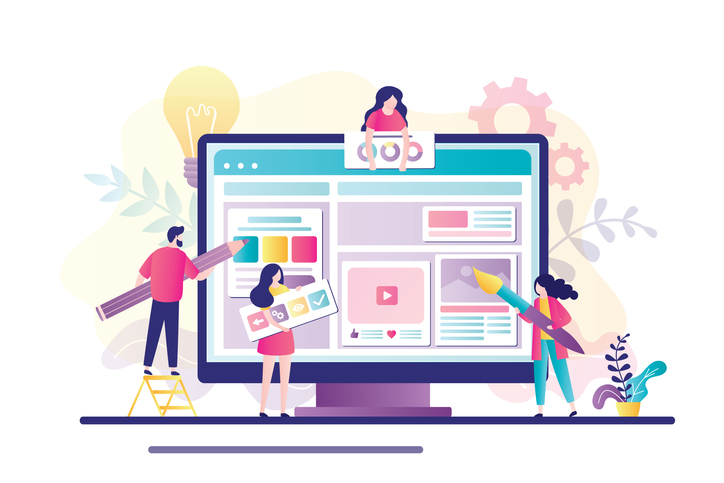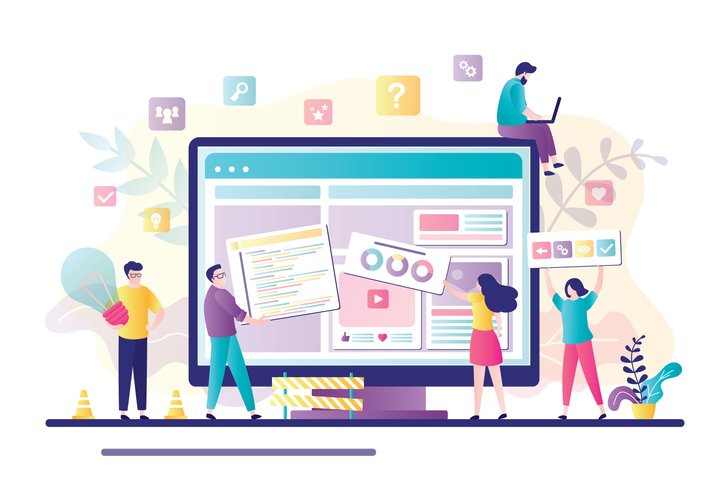
Web Development vs. Web Design
There are more than 320,000 web developers and 60,000 web designers employed in the U.S. alone. Web development and web design are both exciting and potentially lucrative careers. But the two roles are surprisingly different, considering their similar titles.
If you’re considering a career in web development or web design, here’s what you need to know about the two fields and the hybrid roles that are changing the hiring picture.
Web designers and web developers: What are the differences?
This website exists because of web designers and developers. So does every other website you’ve visited.
Some people serve in both capacities. Others work in one role but incorporate skill sets from the other to a lesser degree. And some folks are exclusively designers or developers.
You can’t have a web page or app without both skill sets:
- Web designers conceptualize and layout a page.
- Web developers implement a page and make it function.
What do web designers do?
 Web designers create the user experience (UX) for web pages and apps. They consider how the site will look and function from the front end, considering functionality and aesthetics.
Web designers create the user experience (UX) for web pages and apps. They consider how the site will look and function from the front end, considering functionality and aesthetics.
Website design skills
Web designers need to understand how people use web pages and applications, as well as what layouts work best to make a site user-friendly.
There are two types of web designers:
- UX designers focus on the user experience (UX) of a site. They focus primarily on how to structure and place site content so visitors can easily interact with interfaces, navigate through pages, and find information.
- UI designers design the user interface (UI)—elements the user interacts with. They decide where to place search bars, drop-down menus, clickable buttons, and other components. They use typography, images, and graphics to direct the user.
You might also hear the term “visual designer.” Visual design is considered part of the UI umbrella, but someone who calls themselves a visual designer focuses more on graphic design than functionality.
Visual designers use elements like color palettes, shapes, and fonts to convey an aesthetic or personality. Brands rely heavily on this skill to establish their identities.
Tools of the trade
Web designers sketch out their ideas using mockups and templates. One particularly common tool is the wireframe, a black-and-white template that highlights functionality, user interface, and pathways through the site.
As the idea takes shape, design software programs like Adobe Photoshop and XD come into play. The designer creates full-color mockups, which the developer uses to create the functional website.
Do web designers need to code?
The web design process usually doesn’t require coding, but some designers learn to code—especially HTML and CSS—to make themselves more marketable. Designers with coding skills can earn more and possibly get hybrid design/development jobs.
What do web developers do?

Web developers build websites using programming languages and software development techniques. Also known as “web programmers,” developers are responsible for implementing websites that work. At larger companies, they often work with designer frameworks and bring them to life through code.
Web development skills
Web developers need to know coding languages, programming paradigms, and software development techniques. Computers only understand code, so developers depend on programming languages to “translate” their instructions.
There are many programming languages in the web dev world, each of which uses a different set of conventions. The most popular options include:
- CSS
- HTML
- JavaScript (with modern frameworks such as React)
- Java
- PHP
- Python
- Ruby on Rails
- SQL
Web developers master different programming languages depending on what products they develop and what side of development they work on. For example:
- HTML formulates images and text on web pages.
- JavaScript creates web page functionality and leverages application programming interfaces (APIs) that let apps talk to each other.
- PHP creates web pages that talk to databases.
Most developers also learn to use tools like GitHub, which stores and saves versions of code so programs are easier to build, maintain, and share.
Types of web development jobs
There are two sides to web development:
- The front end is everything the user can see and interact with.
- The back end involves data storage and methods of storing, retrieving, and delivering information to and from the front end.
Think of the front-end/back-end sides as a pair of co-working librarians. One asks what you need. The other goes into the stacks to get it, then brings it back to the first librarian who hands it to you. These two skills create three types of web developers:
- Front-end developers work on a site’s user-facing functionality. They program what the site visitor can see, hear, and click. They’re also called client-side developers (the client being the user, not the person who hired the developer).
- Back-end developers focus on server-side functionality, writing code that stores data and fulfills user requests.
- Full-stack developers work on the client and server side, often coding entire web applications and sites.
Full-stack developers earn more than front-end or back-end web developers because of their broader knowledge base.
What pays more: Web design or web development?
According to Glassdoor, the average web designer salary in the U.S. is $58,517 per year, whereas the average salary for website development is $70,863 per year.
Web developers earn more because of their technical skills, which employers tend to view as harder to acquire. Moreover, many developers have some design experience laying out websites that they code or adding visual elements to improve the page’s appearance. It’s easier for a company to find a developer with some design experience than to hire a designer and hope they learn to code.
Is web development a dying career?
Some folks point to visual website builders and content management systems as predictors of the death of web development. These new tools allow designers to create prototypes and even final build-outs without the aid of a programmer.
However, while new tools open the marketplace for non-coding designers, web development is here to stay. New tools might take over some of the developer’s lower-level tasks, but there are still many challenging tasks for developers to work on. Meanwhile, more designers can work on development tasks and possibly boost their income.
The skills involved in web design and development will change as technology evolves. The way the two roles fit together will also change with time. But there has never been a better time to get started or to brush up on the skills you already have.
Next steps: Learning web design and development

Whether you’re a web designer or developer learning to cross skill, or a total beginner looking to build from the ground up, edX has fully online classes and programs for you. Try a stand-alone web design course or a program like HECMontrealX’s MicroMasters® program in UX Design and Evaluation.
There’s also a variety of web development courses and programs, including language-specific courses and full-stack development. Check out your options today, and get ready to take your next professional steps—or just learn for your enrichment.
